An Afternoon in Belém
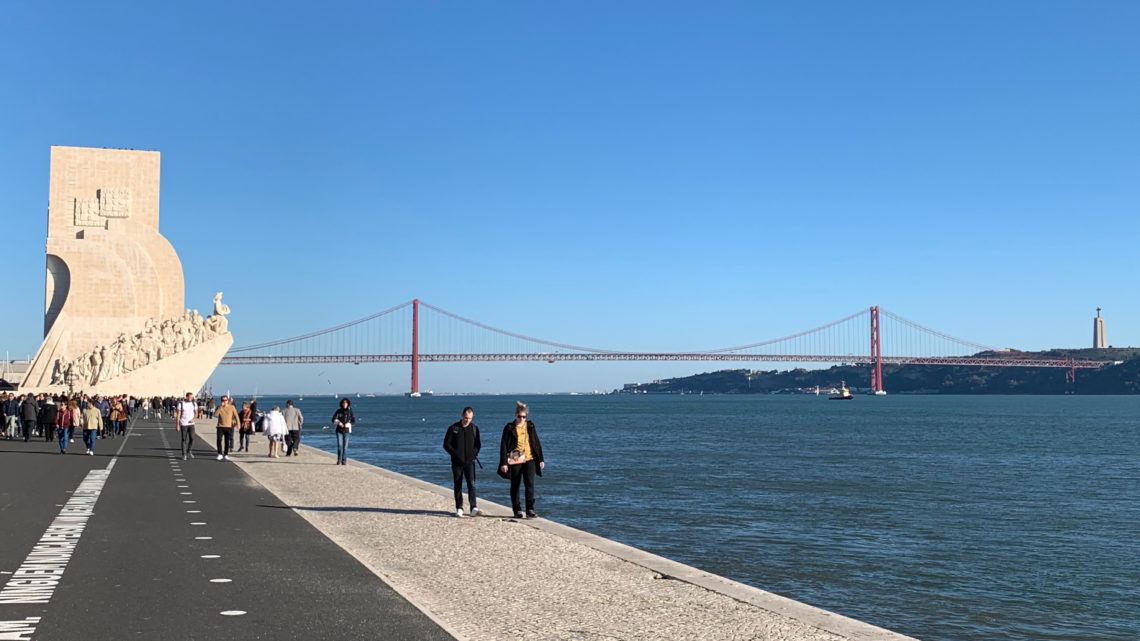
Lisbon is a sprawling city with many neighborhoods and significant sites. Although the historic center is compact and walkable, there are plenty of sites located outside this area. After thoroughly exploring the Baixa and Alfama districts, I set out to visit some of Lisbon’s attractions located beyond the city center, particularly in Belém. This neighborhood was an important port district and served as the starting point for several voyages to Africa, India, and the New World.
Praça do Comércio
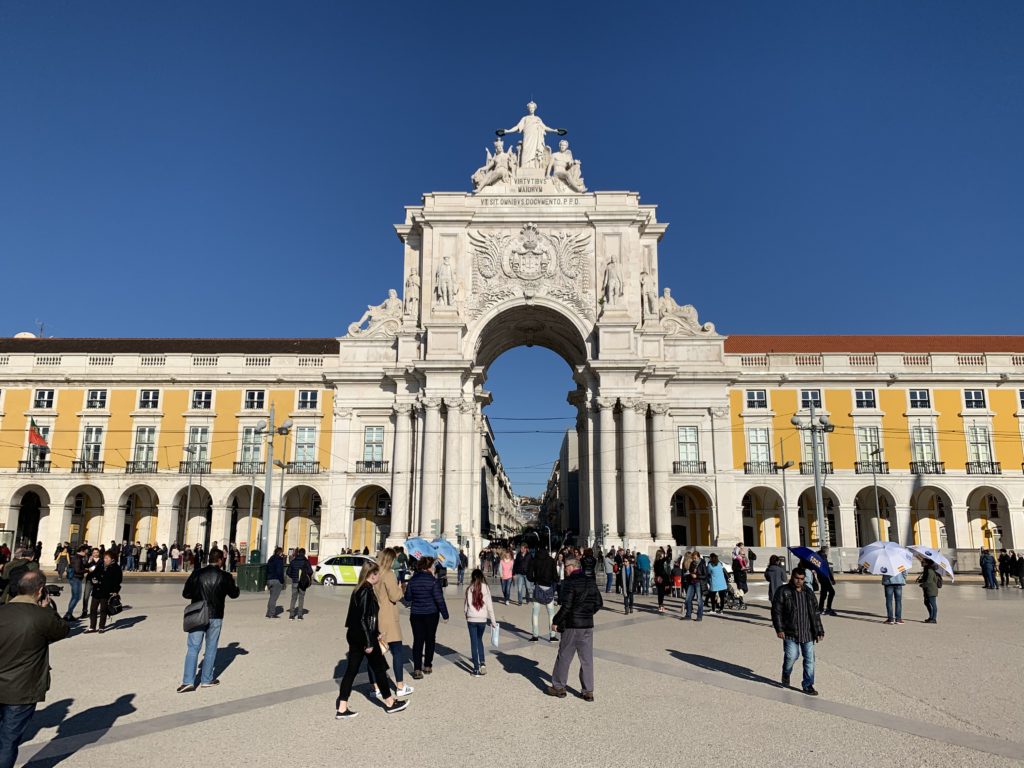
Before setting off to Belém, I decided to wander around Lisbon’s city center a bit more. From my hostel, I headed downhill towards another important square: Praça do Comércio. This section of the city formerly housed the Paços da Ribeira, a royal palace, before it was destroyed by the great earthquake. Today, this U-shaped square is surrounded by bright yellow buildings that house government offices and restaurants. The massive, Rua Augusta Arch separates the square from the rest of the low town. This Neoclassical triumphal arch was constructed to commemorate the rebuilding of Lisbon after the devastating earthquake.
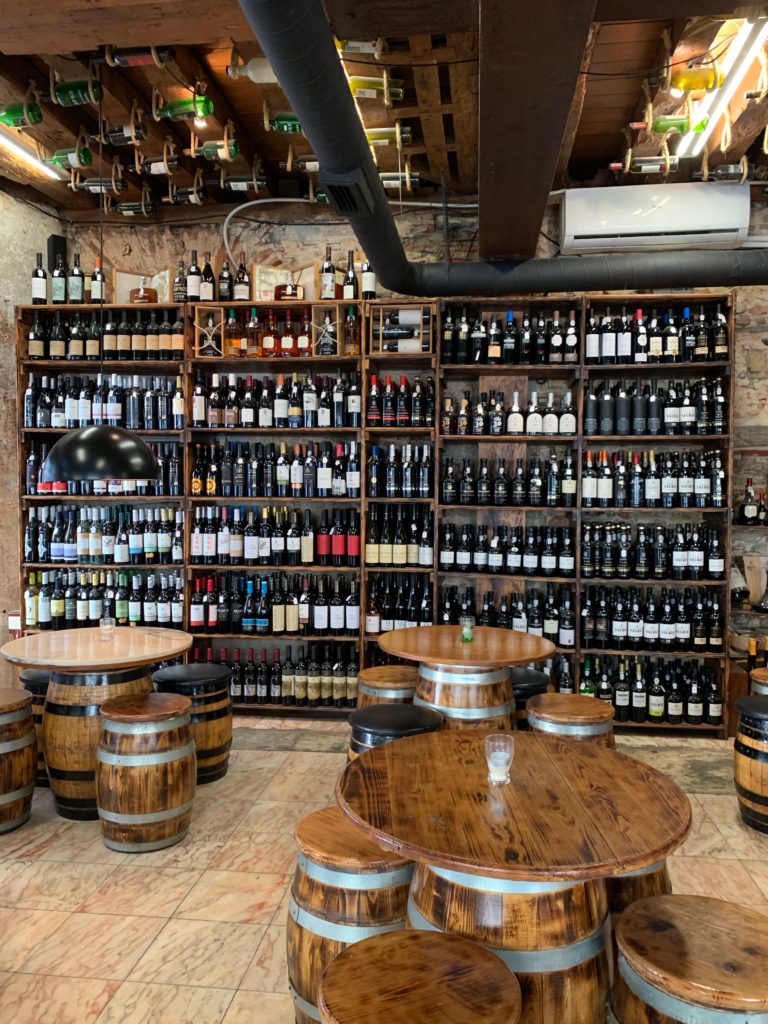
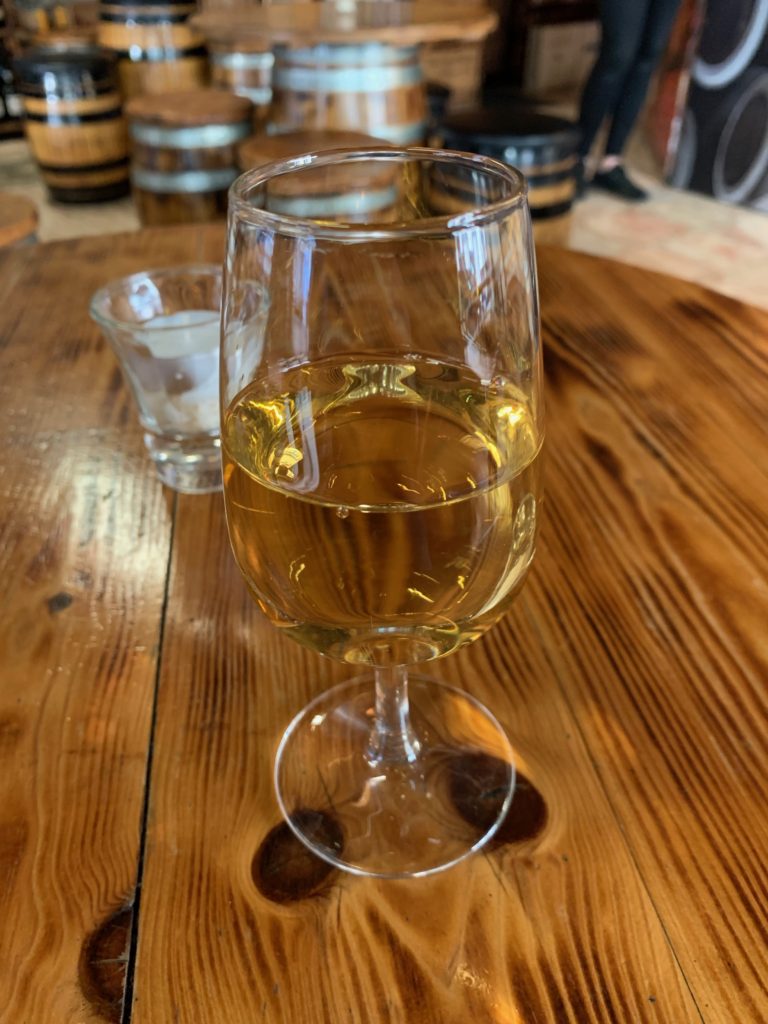
Portugal is known for its wine, particularly Port: a strong and sweet dessert wine. I located a nearby wine bar and stopped by to sample this Portuguese drink. The inside of the bar was decorated with aged wooden shelves lined with wine bottles. Since I am a white wine drinker, I asked for a white port. I sampled both a sweet and a dry variant and decided to go for the drier one. I sat down and sipped the fine dessert wine while having a friendly conversation with the bartenders. Port has a thick texture compared to other wines and has
Bairro Alto
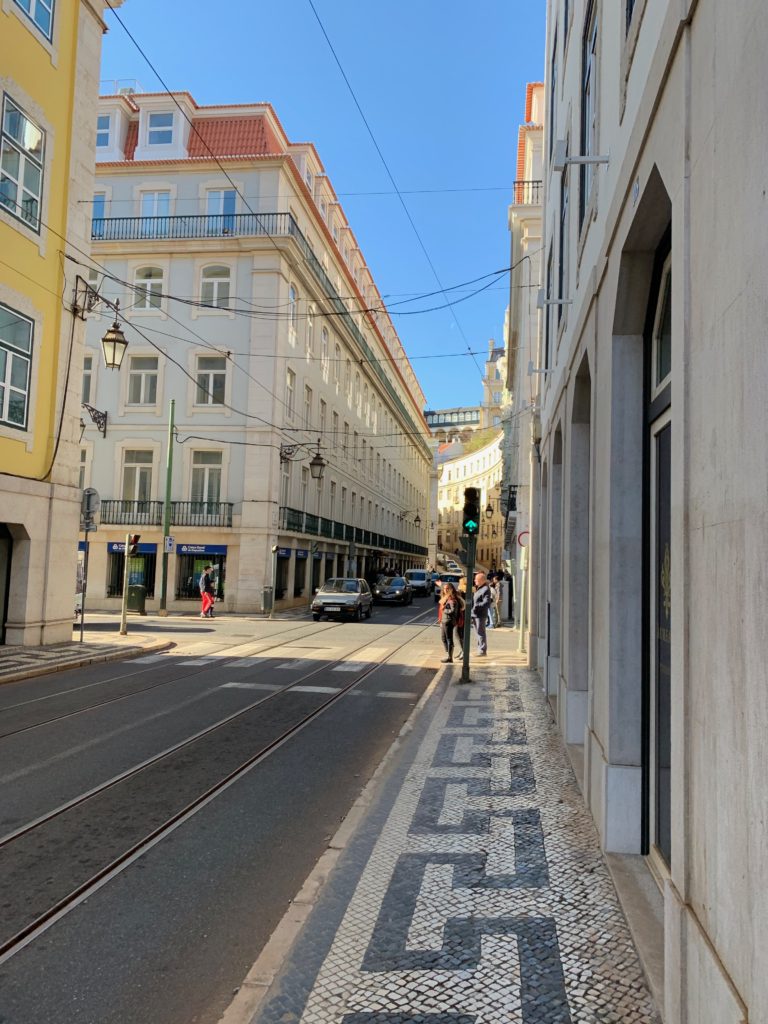
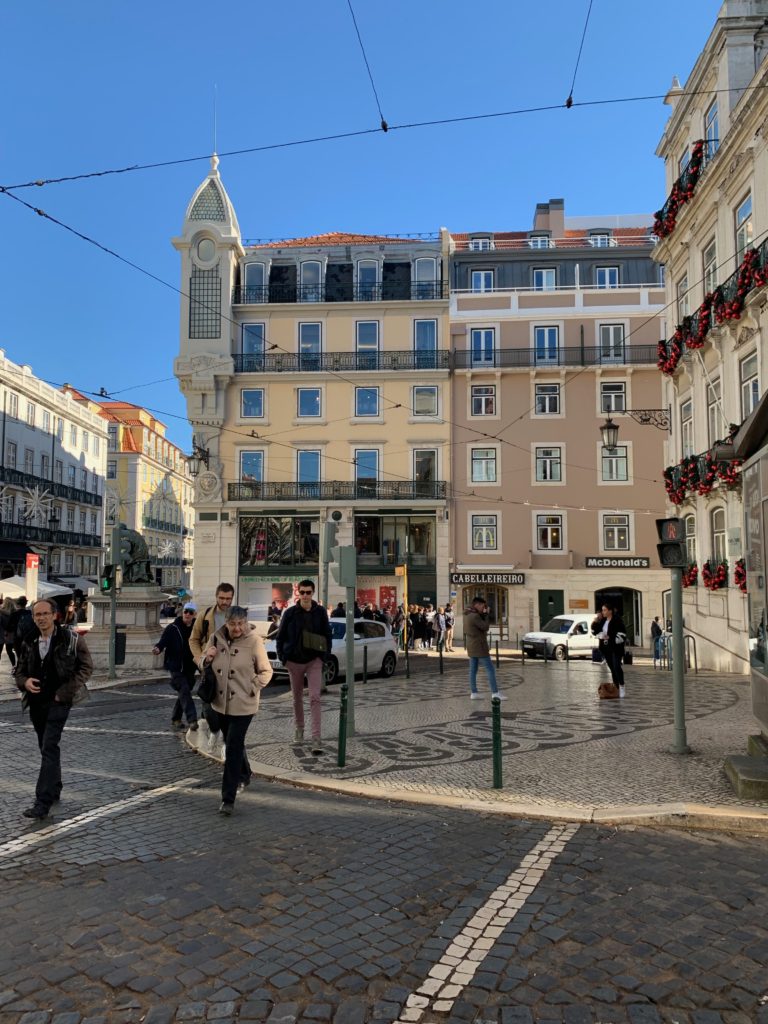
Since I was in the area, I decided to explore the Bairro Alto, which I did not visit as part of my walking tour. I headed up the steep hill into this colorful neighborhood. As I walked around, I couldn’t help but notice the striking similarity between Lisbon and San Francisco. Both cities are built on hills, often requiring visitors to traverse steep slopes as they walk between blocks. Additionally, both cities have an extensive tram system with a mix of historic trolleys and sleek light rail vehicles. Finally, as I would soon discover, Lisbon has its own version of the Golden Gate Bridge.
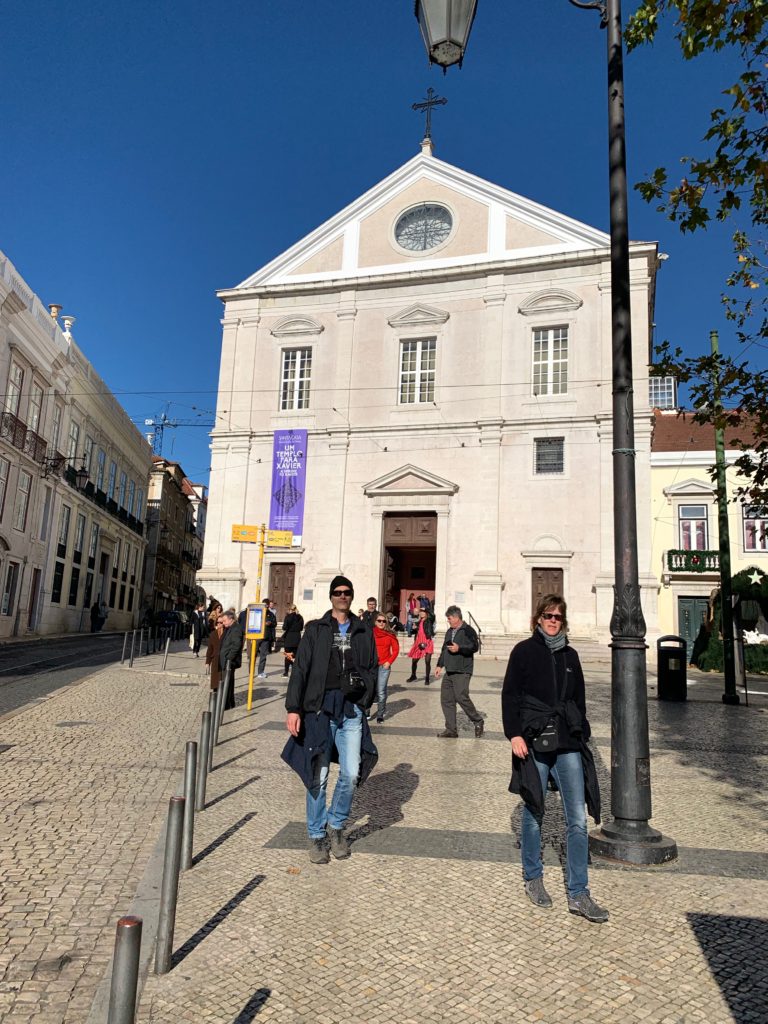
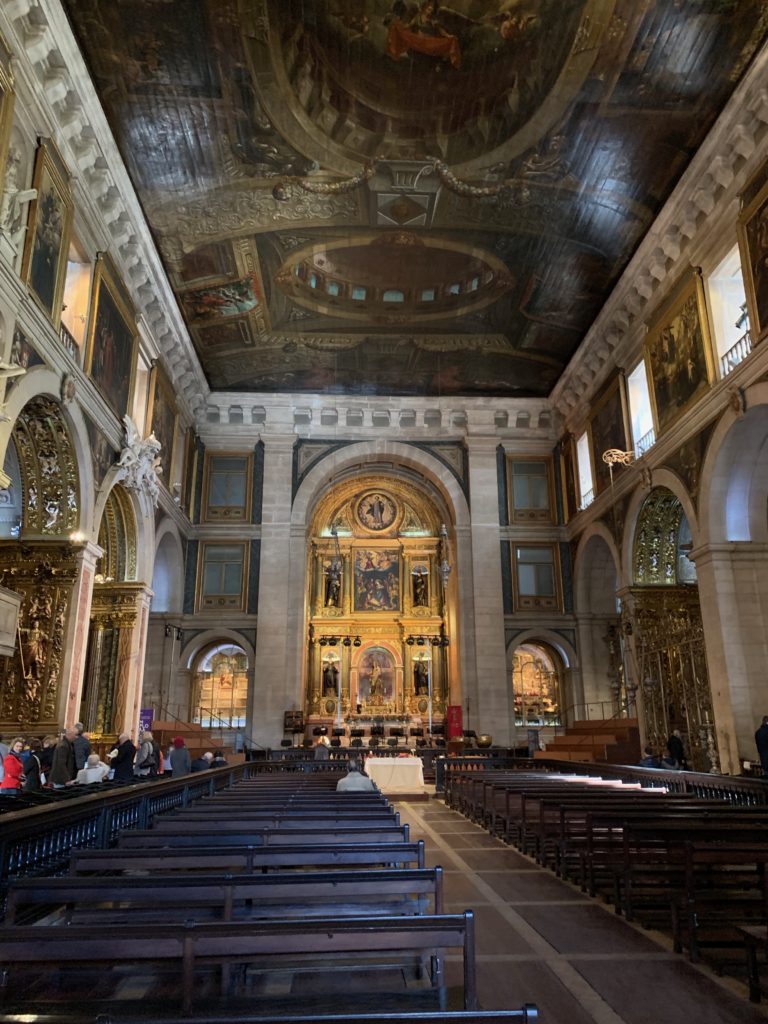
At the top of the hill, I reached another square with a small church: Igreja de São Roque. The Baroque façade is austere, consisting of no more than three bays of windows and large Doric pillars. The building boasts a simple gabled roof in contrast to the intricate roofs of many cathedrals. As I stepped inside, I was immediately drawn to the frescoed nave. The ceiling is painted to give viewers the illusion of a barrel-vaulted ceiling supported by four large arches. However, in reality, the nave is covered in a simple, flat wooden ceiling.
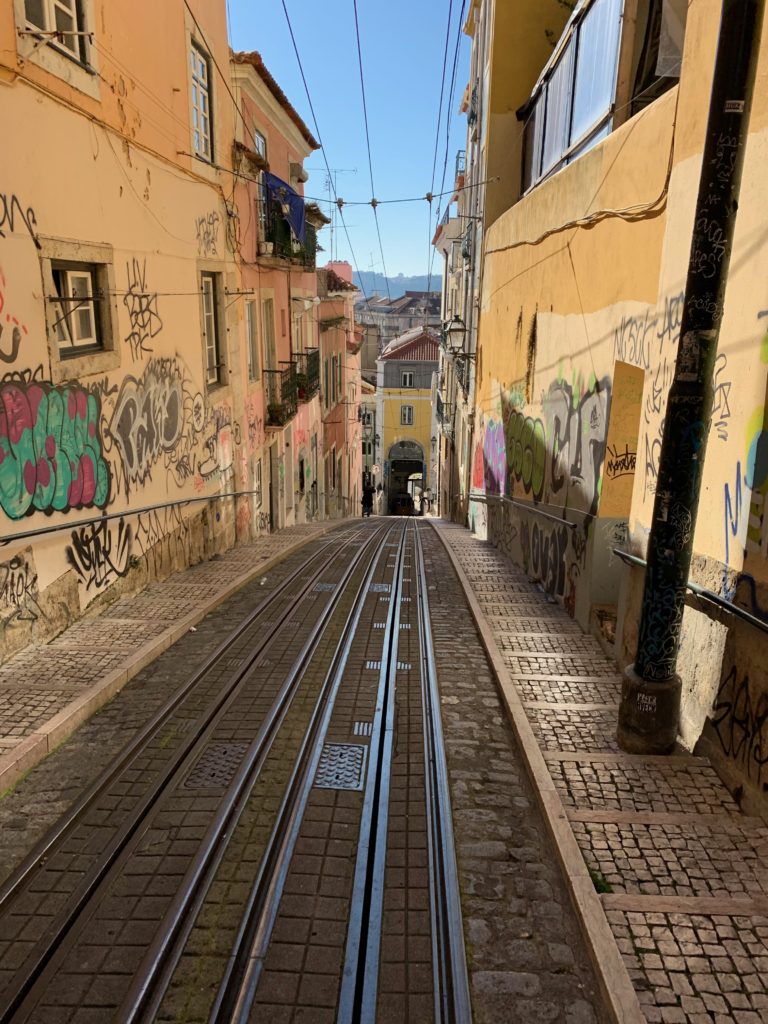
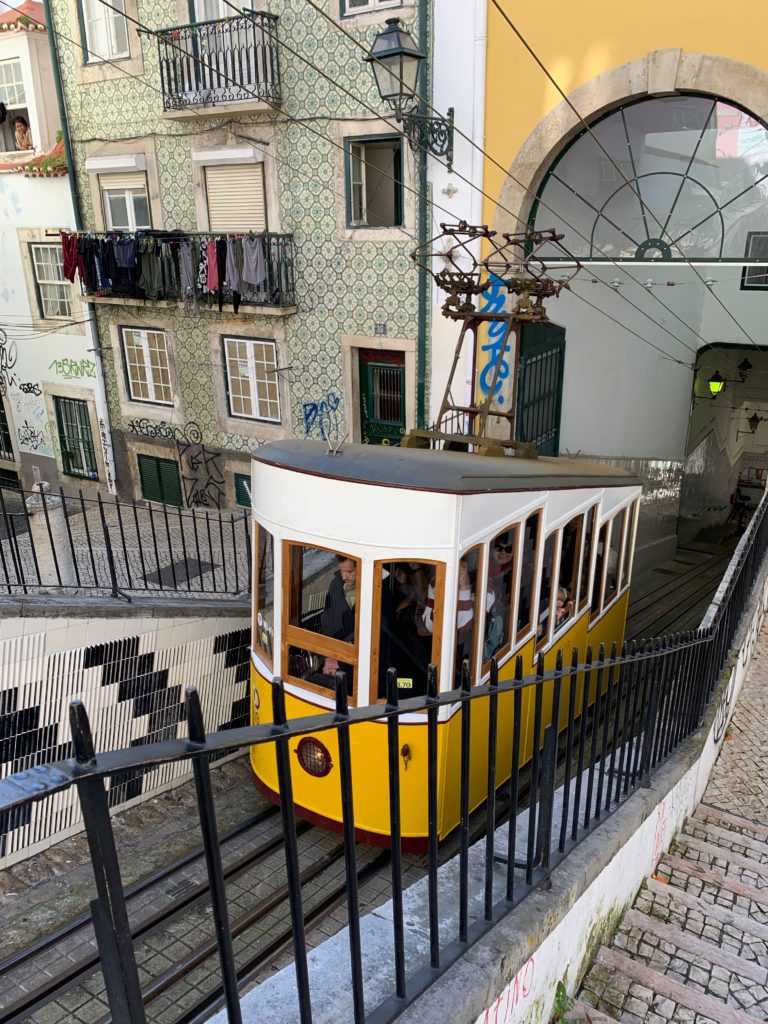
Back outside, I ventured down the hill towards Cais do Sodré: the station with trains bound for Cascais. On the way, I got an impressive look at one of Lisbon’s funicular trams. This funicular ascends a steep alley from Cais do Sodré to the Bairro Alto. I followed the funicular tracks down the hill and veered off before they entered the station.
Heading to Belém
Down by the shore, I grabbed a quick lunch of codfish and potatoes at a nearby restaurant. Thankfully, the food quality was much better for the price than what I ate the day before. After my meal, I walked over to the train station and got on the commuter train bound for Cascais. Compared to many other European countries, such as the United Kingdom, the trains in Portugal are inexpensive. Three stops later, I got off in Belém.
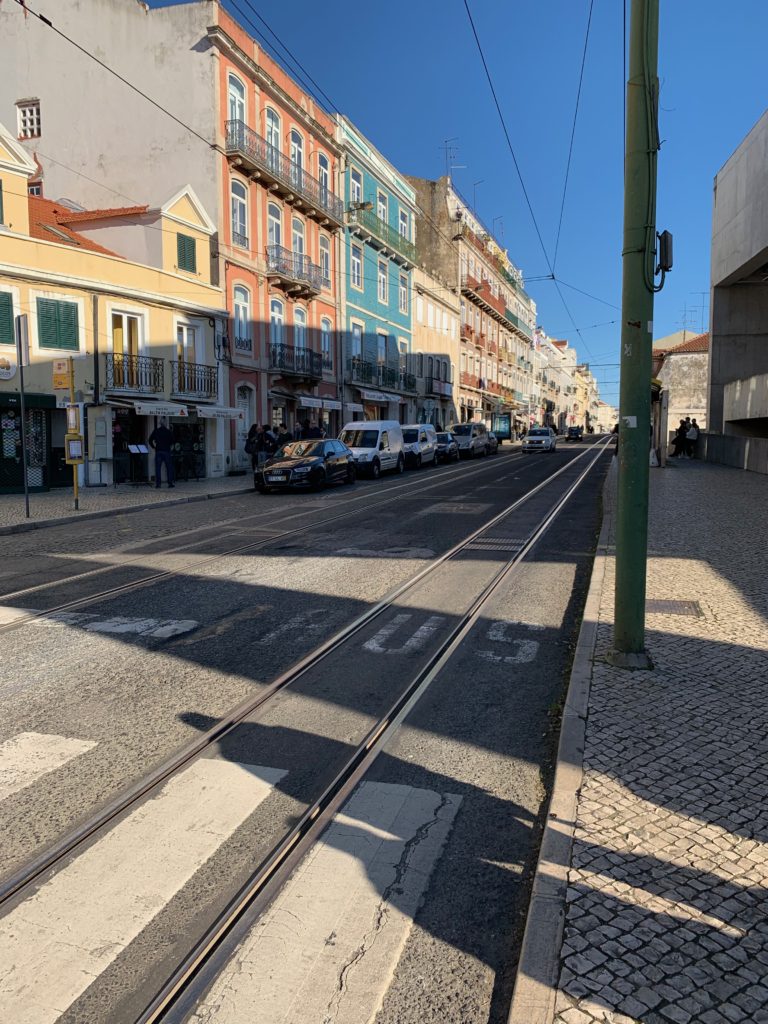
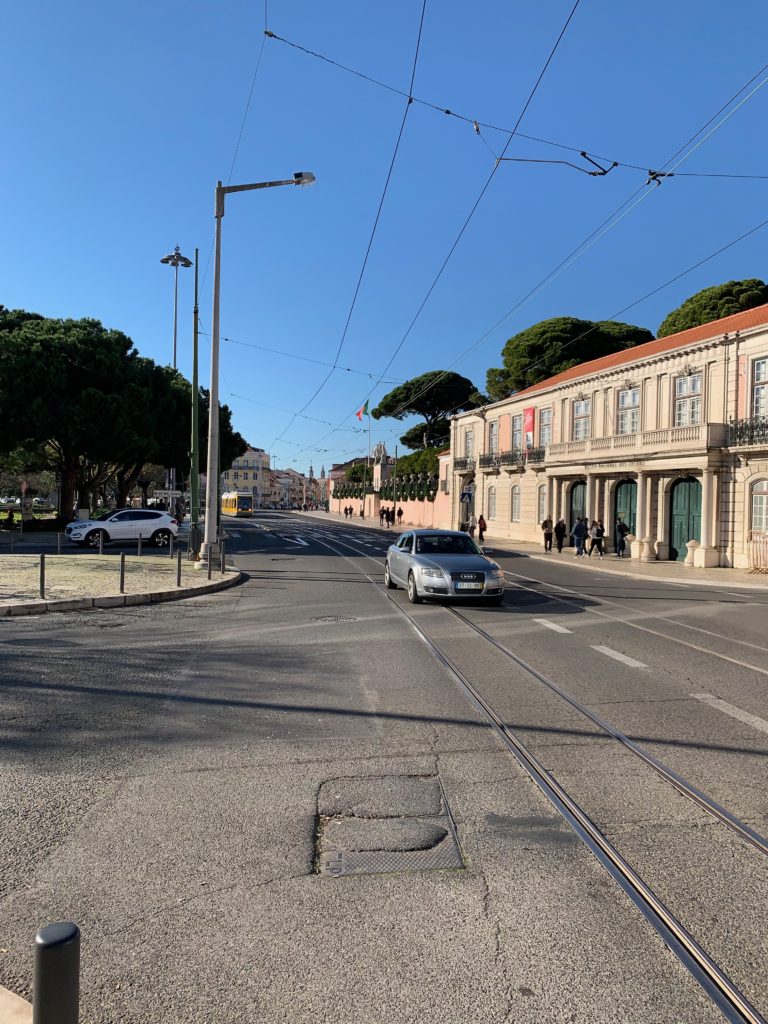
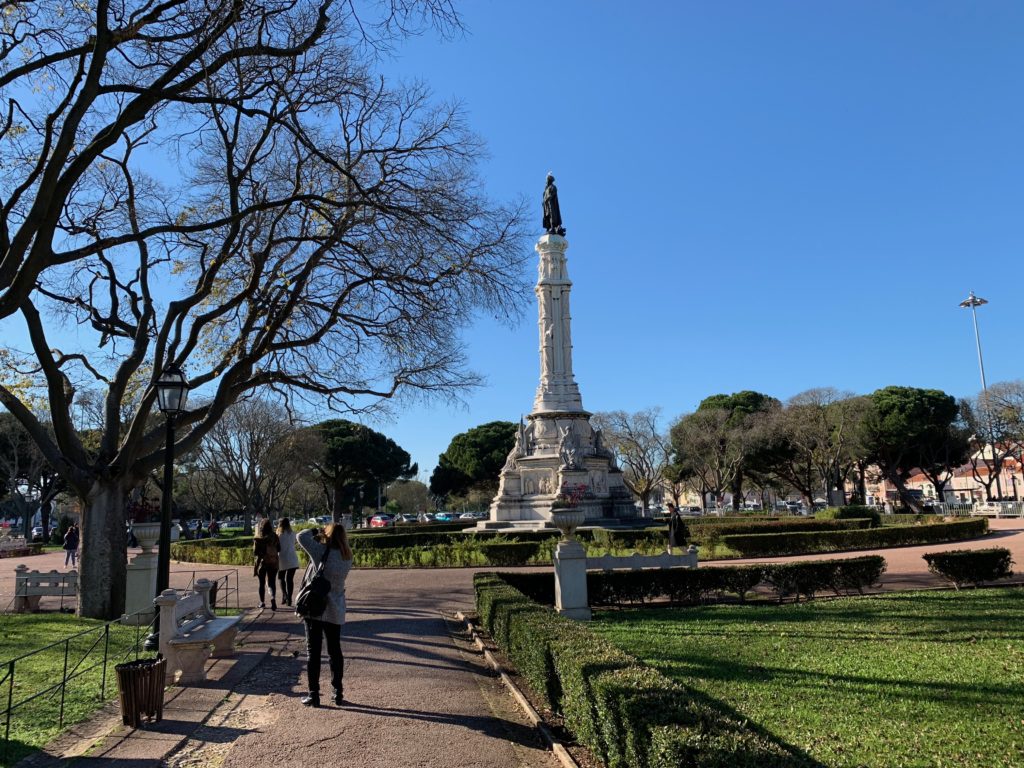
This bustling district on the Tagus River is home to several famous monuments and is thus a popular side trip for many of Lisbon’s visitors. The neighborhood is beautiful, with a mix of green spaces and colorful Pombaline-style buildings.
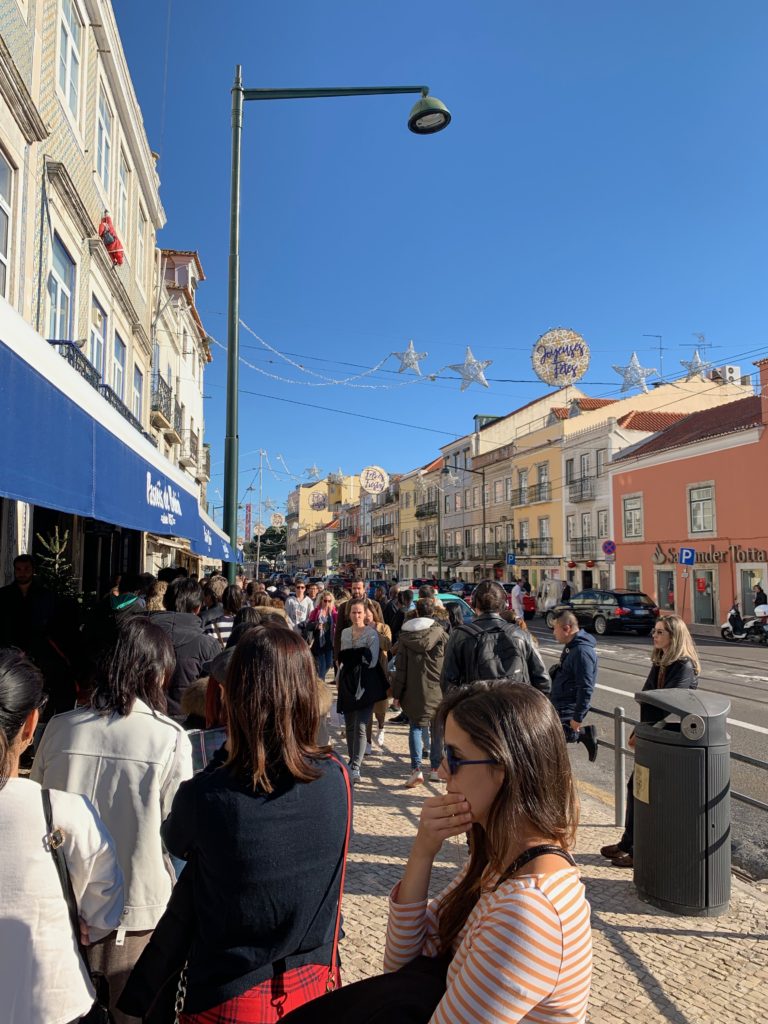
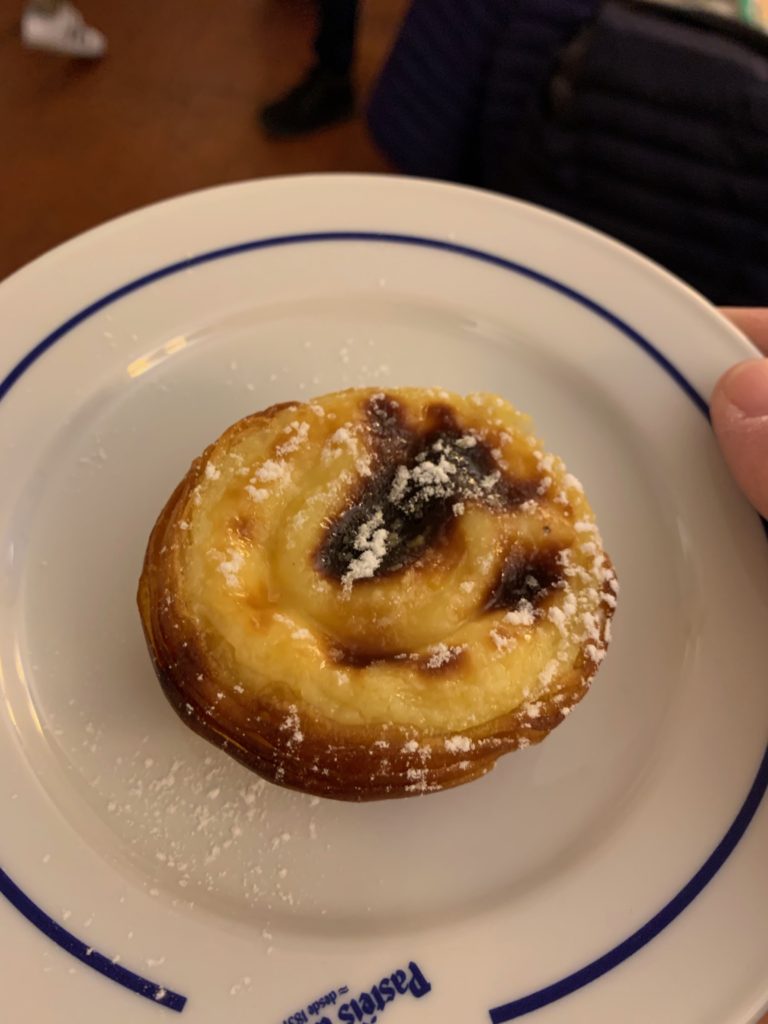
Belém is also home to a bakery that serves one of the most delicious pastries I have ever had: the Portuguese custard tart. This dessert is made primarily from eggs and has a smooth, creamy flavor. Even though they can be found all over the city, I wanted to try them at the bakery that started it all. Although the line was out the door, this bakery has seating for up to 400 people and they are efficient with crowd control. 15 minutes later, I ate what was easily the
Padrão dos Descobrimentos and Torre de Belém
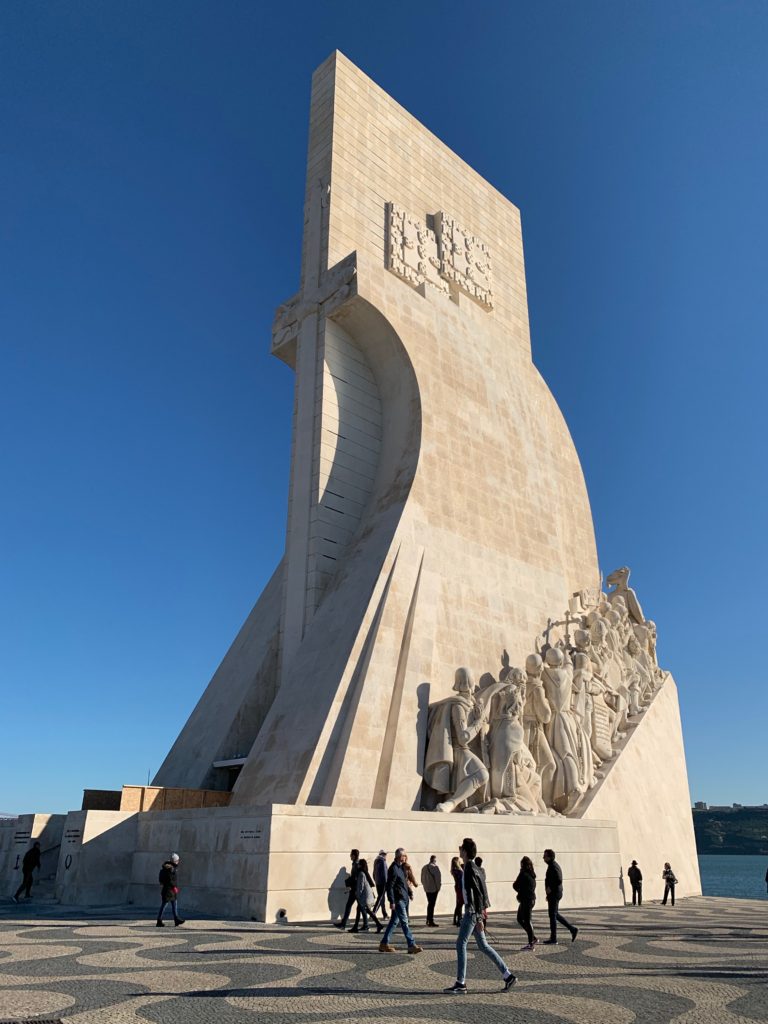
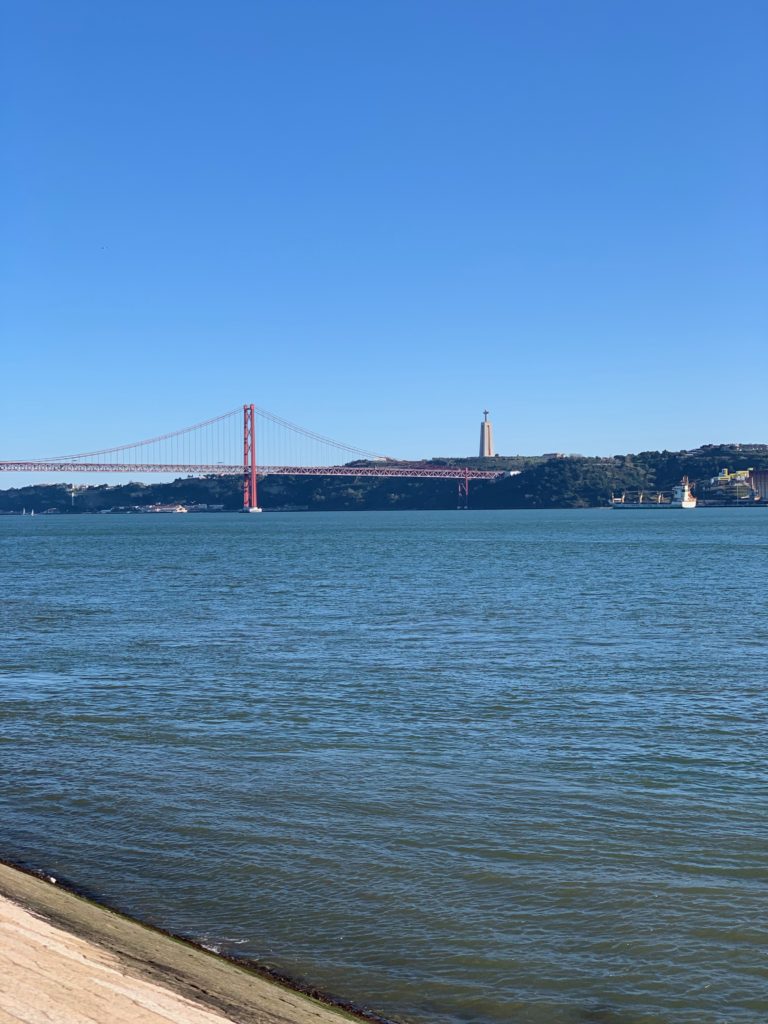
After my quick pastry stop, it was time to visit some of Belém’s major monuments. The first of these was the Padrão dos Descobrimentos: a large tower commemorating the Portuguese Age of Discovery. Finished in 1960, the limestone monument depicts important Portuguese explorers, most notably Henry the Navigator. The figures take on a commanding appearance as if they are about to set sail into the unknown. For a fee, visitors can ascend the tower for a panoramic view.
In the background, I could see the 25 de Abril Bridge: Lisbon’s answer to the Golden Gate Bridge. This structure connects Lisbon with the city of Almada across the river. Almada also has its own version of Christ the Redeemer, which overlooks the city of Lisbon.
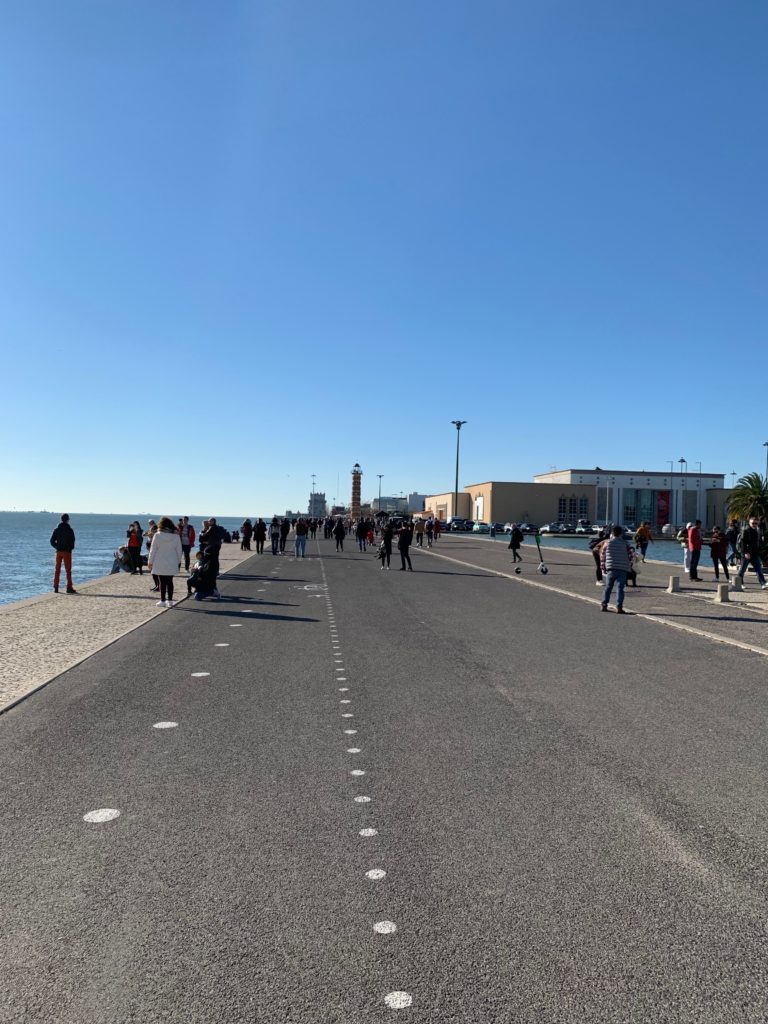
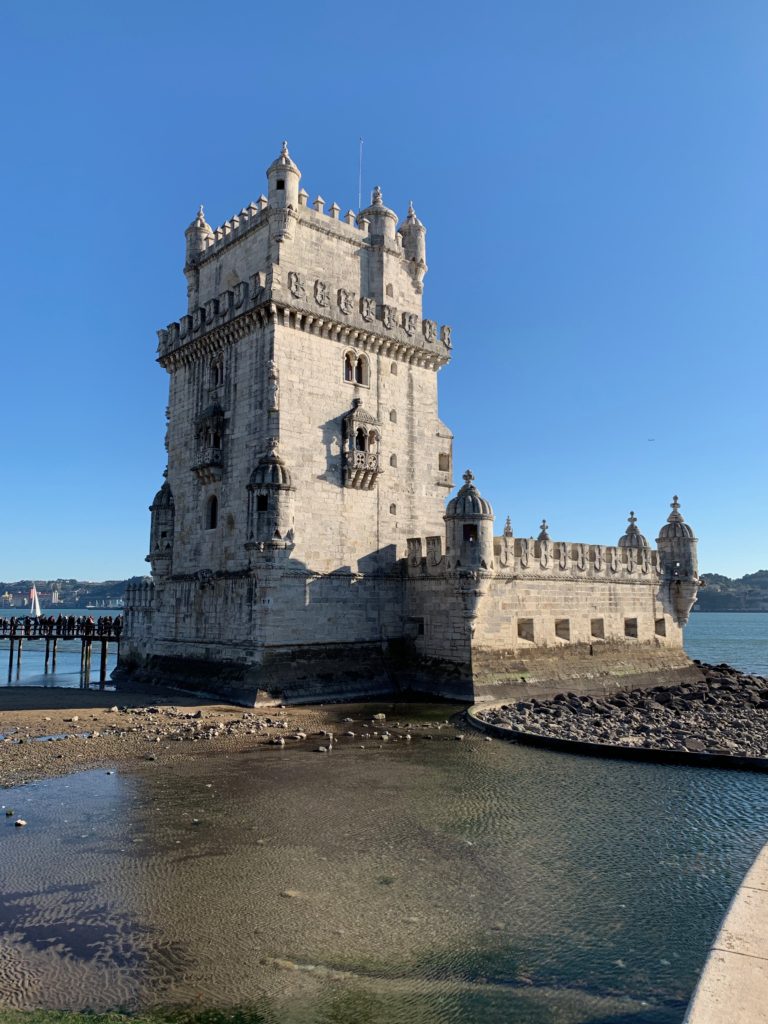
I continued down a wide, waterfront promenade, where I soaked in some amazing sunny weather. Much like in Barcelona, the weather in Lisbon was only slightly chilly in December, making it a beautiful city year-round.
I arrived at another important monument: the Torre de Belém. This 16th-century tower was built as both a fortress and a ceremonial gateway into the city. The building was designed in the Manueline style: a Portuguese form of late Gothic architecture. Its limestone exterior is richly decorated in ornamentation inspired by Portuguese explorations. The tower takes on the appearance of a small castle, topped with a lookout terrace. Much like the Padrão dos Descobrimentos, visitors can ascend this tower for a commanding view.
Jerónimos Monastery
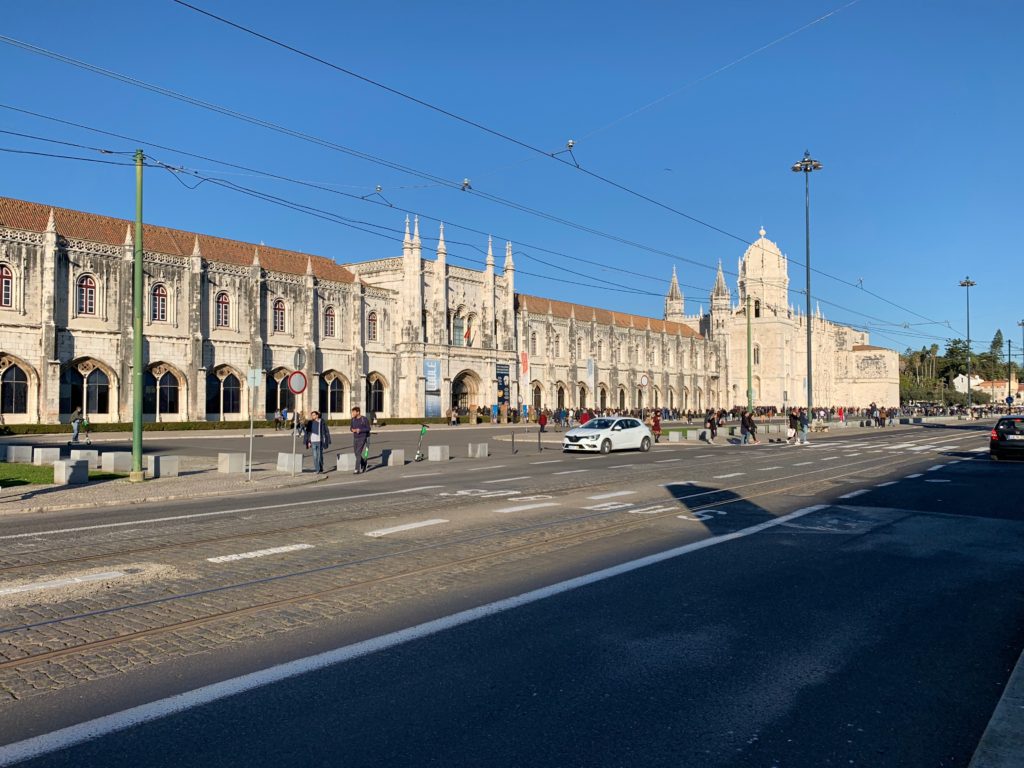
Although the Padrão dos Descobrimentos and Torre de Belém are spectacular, I decided to save my euros for the entrance fee of the nearby Jerónimos Monastery. This magnificent building is my favorite in the whole city. As another prime example of Manueline architecture, it boasts an ornamented limestone exterior that is decorated with statues, twisted pinnacles, and maritime-inspired carvings. The elongated portion of the building serves as space for Portugal’s National Museum of Archaeology and the Navy Museum, whereas the church and cloister wings are open to monastery visitors.
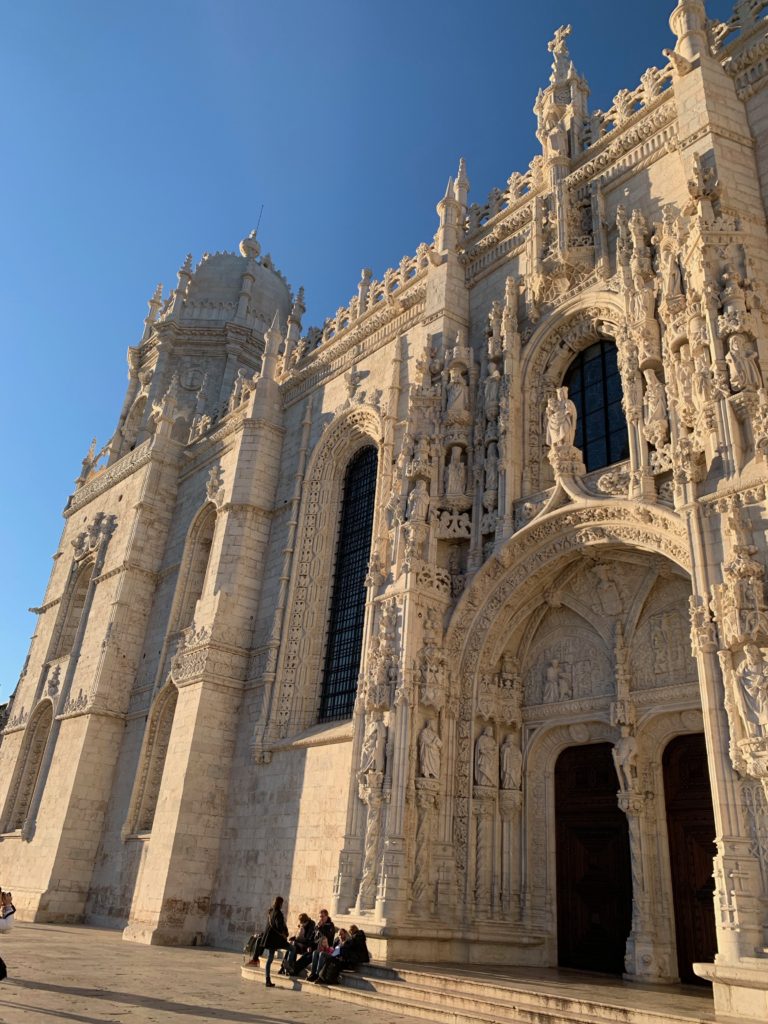
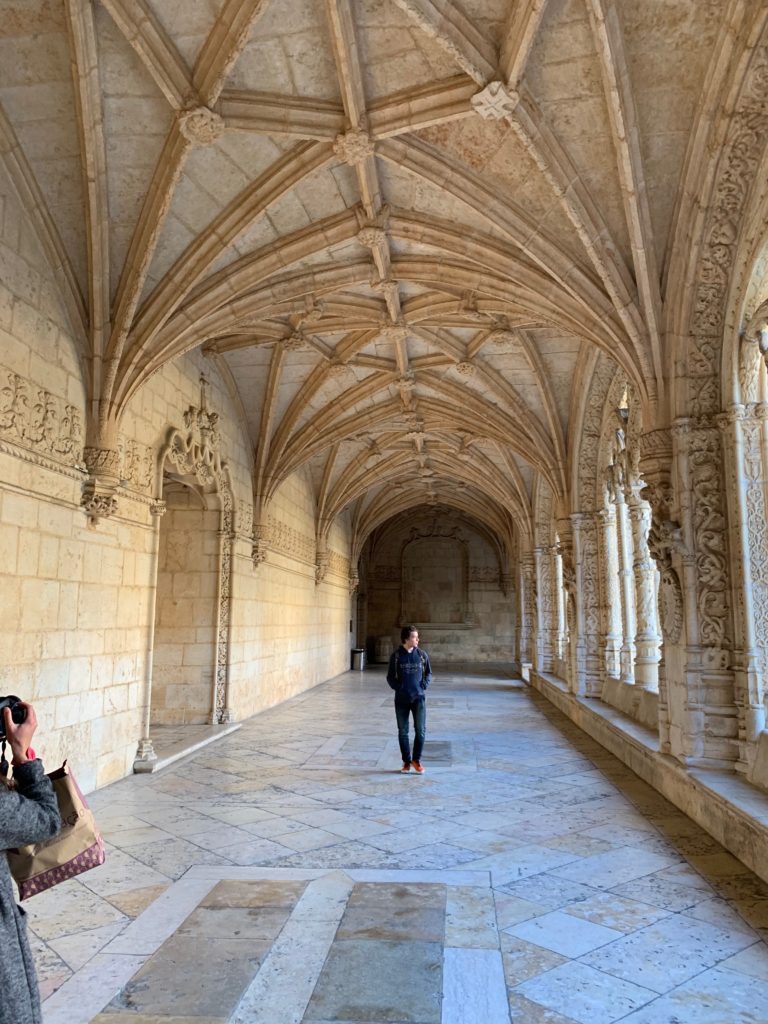
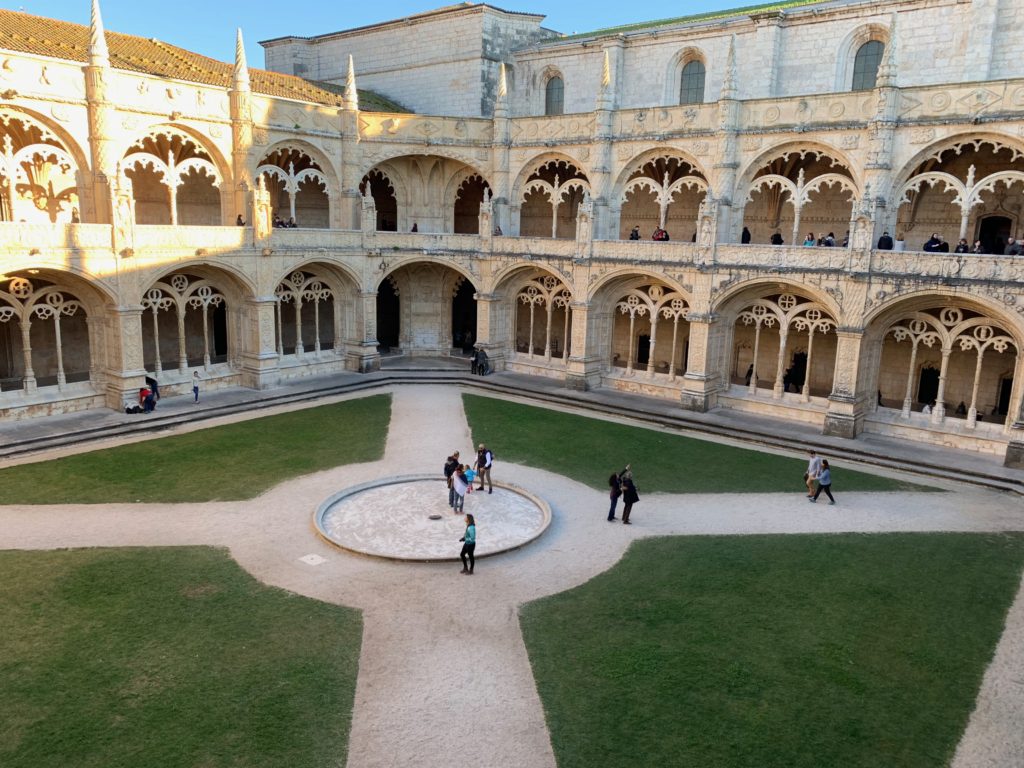
I entered the monastery next to the extremely ornate south portal. Designed by João de Castilho, this opulent entrance is reminiscent of a shrine and is adorned with Manueline symbols. After walking inside, I proceeded into the beautiful cloister. The two-story arcaded courtyard blew me away with its delicate arch openings and elegant ornamentation. It felt like an outdoor oasis that could only be discovered by entering the grand monastery.
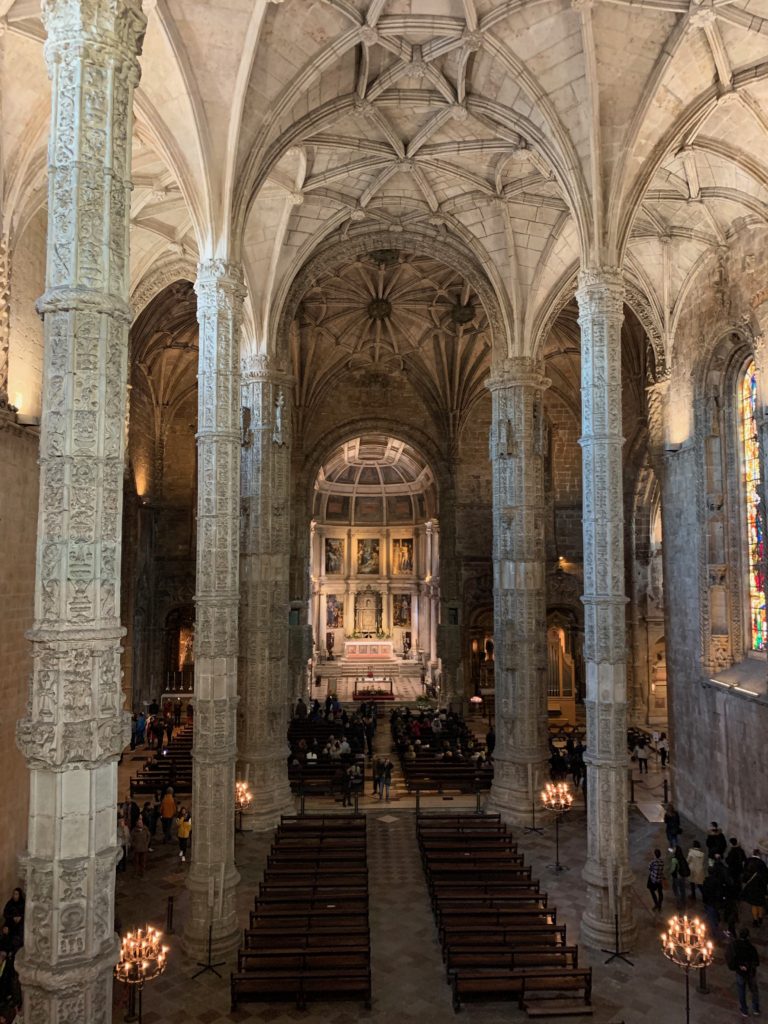
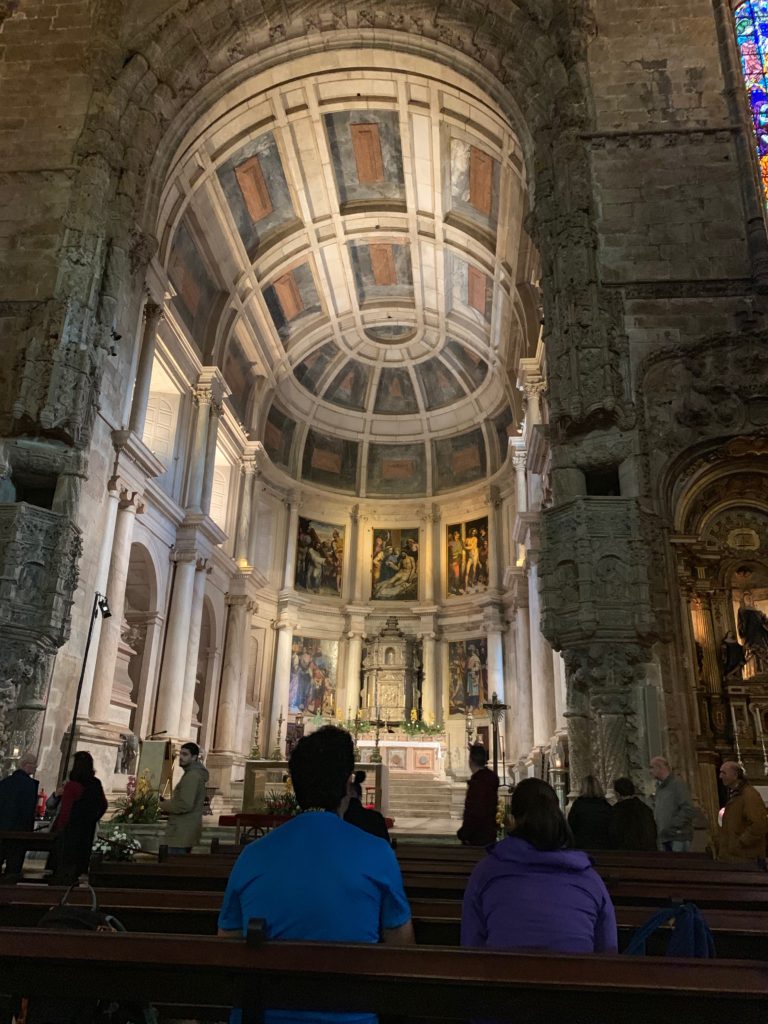
The church wing is also richly decorated with large columns that support a tracery-vaulted ceiling. Although this style of vaulting is more reminiscent of a traditional ribbed-vault, it still reminded me of the fan vaulting I saw in London and Bath.
Overall, I thought that Belém was well worth the side trip. This neighborhood has some of Lisbon’s most monumental attractions and provides the best view of the water in the city. As evening approached, I hopped back on the train towards the city center. I headed into the Bairro Alto in search of a viewpoint that my hostel mate recommended. After wandering through the neighborhood, I found the Elevador de Santa Justa. For a small cost of €1.50, I climbed up the stairs to the observation deck.
Sunset at the Elevador de Santa Justa
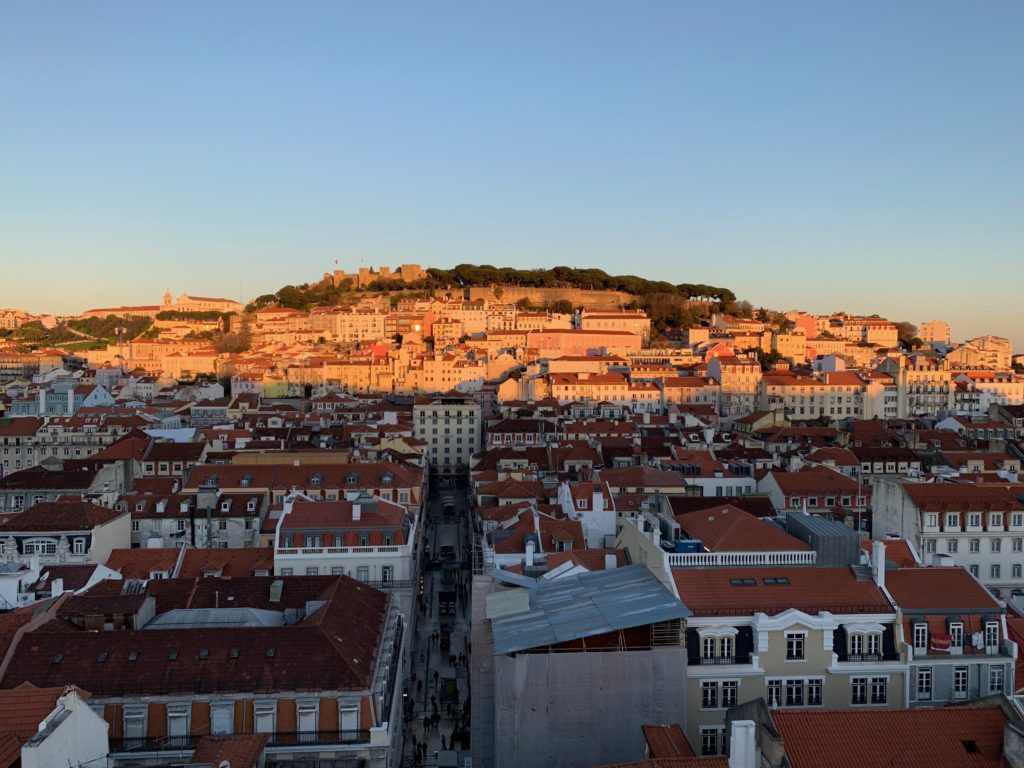
I arrived just in time for another breathtaking sunset over the city. The pastel buildings basked in orange as twilight approached. I also got another view of the beautiful Castelo de São Jorge, which crowned the hill over the red-tiled buildings.
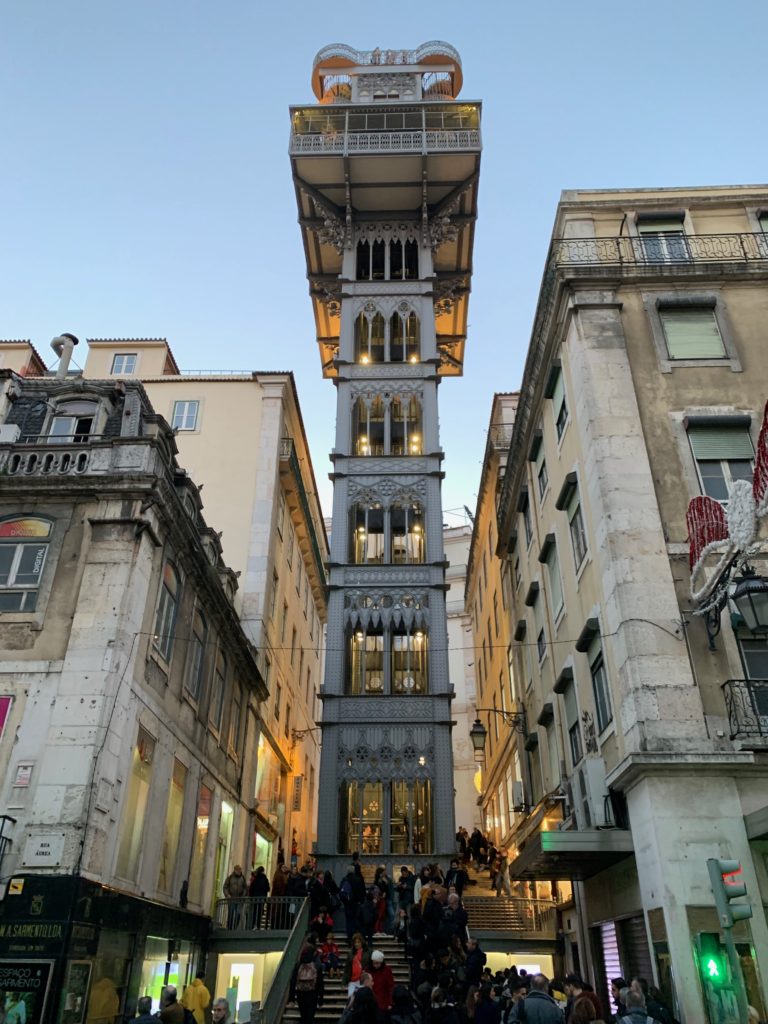
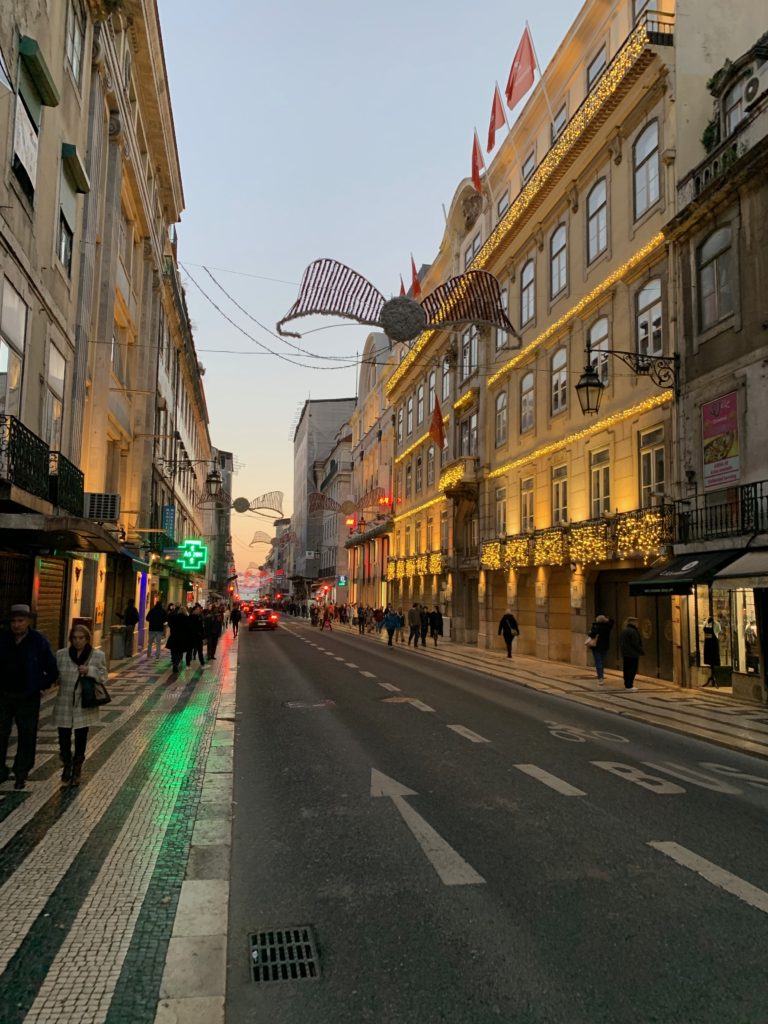
I descended back down to the lower town. Instead of paying €5 to ride the elevator, I opted to walk down some nearby stairs to its base. From here, I looked up at the imposing iron structure beautifully lit up against the night sky. It is a true one-of-a-kind piece of engineering that links the Bairro Alto with the Baixa.
After my long day of exploration, I headed back to the hostel for free sangria and group bonding. I decided to take the night easy since I had a long sightseeing journey planned for the next day.
